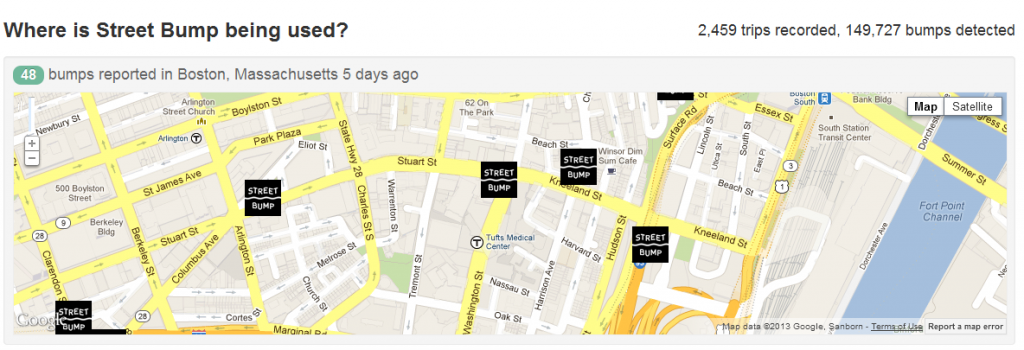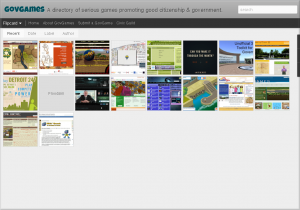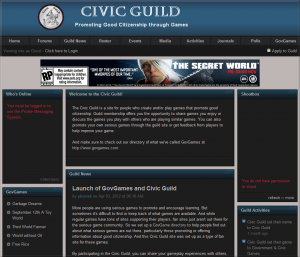This month we have an infographic showing the rising need and salaries for IT professionals. IT services support a lot of what we do in government, and if we want to ramp up and innovate delivery of our services, IT professionals will play a key role in supporting our efforts. For those thinking about IT as a profession, the future is looking bright.
Using Social Media to Promote Safety Around Trains
Melbourne Metro, a transit service based in Australia, has been successfully using social media to educate the public about safety around trains. Last year they produced this video called Dumb Ways to Die starring a cast of cute little characters and a catchy tune.
And now Melbourne Metro has released a game related to the video's theme. You can download the game for free at iTunes here: Dumb Ways to Die App. These efforts provide a good example of how an agency or company can make use of social media to promote a serious message in a fun way that leads people to actually pay attention. Based on their success, I could easily see how this particular campaign could now be extended to offline formats such as t-shirts, coffee mugs, etc which helps to further promote their message to an even wider population.
You can check out more about their campaign on the Dumb Ways to Die website.
Statistics:
In 2011 in Australia there were 33 rail fatalities reported and 66 injuries (one region not reporting). According to the Federal Railroad Administration, in 2011 there were 673 people (non-employees/contractors) killed in train-related casualities in the United States. That same year 3,567 people (non-employees/contractors) were injured.
Street Bump – useful but not ready for prime time engineering
Today I tried out Street Bump – a mobile application designed and developed by Connected Bits, LLC and produced by the Mayor's office of Boston. This application, available for the iPhone, picks up bumps in the road as people drive along a street with their phone. Because smoothness or "the ride" is one component we assess when we rate roadway condition, I thought it would be worthwhile test driving the application, literally.
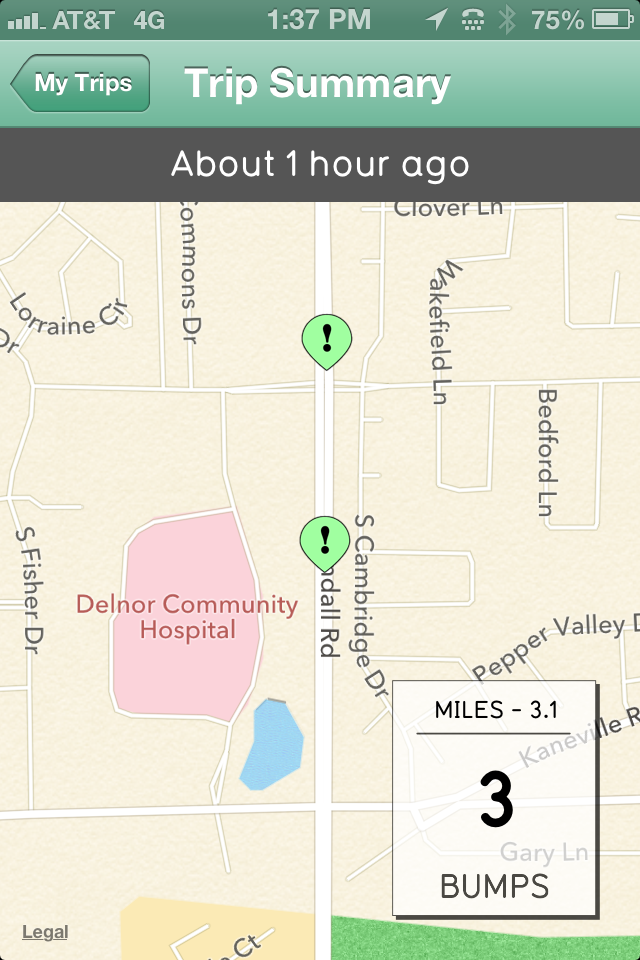 So far, I only tested it on two trips, and here's what I observed. My phone measured one bump on my first trip along 3.44 miles of mainly country roads and three bumps along 3.10 miles of the same route, but traveling in the opposite direction. The first bump on the first trip seemed to occur as we crossed the centerline to turn into a driveway and was plotted in an accurate location. On the second trip, I did not catch where the first bump showed up. The second seemed to occur when I switched the sound on while recording my trip, and it accurately plotted the location where I was when I did this. (I also want to mention I was a passenger on both trips.) The third bump occurred when we moved across a rough transition from a recent paving job onto the older pavement, but this one did not accurately plot. The bump had been in the westbound lane of a road we had turned left onto, but the map plotted it in the northbound lane of the road we had been traveling along before turning.
So far, I only tested it on two trips, and here's what I observed. My phone measured one bump on my first trip along 3.44 miles of mainly country roads and three bumps along 3.10 miles of the same route, but traveling in the opposite direction. The first bump on the first trip seemed to occur as we crossed the centerline to turn into a driveway and was plotted in an accurate location. On the second trip, I did not catch where the first bump showed up. The second seemed to occur when I switched the sound on while recording my trip, and it accurately plotted the location where I was when I did this. (I also want to mention I was a passenger on both trips.) The third bump occurred when we moved across a rough transition from a recent paving job onto the older pavement, but this one did not accurately plot. The bump had been in the westbound lane of a road we had turned left onto, but the map plotted it in the northbound lane of the road we had been traveling along before turning.
One feature I thought of right away that would be helpful is an indication showing me the roads where I have already driven. Right now, only bumps appear to be plotted. So if no bumps are recorded along a street, there is no documentation that I have checked that route and it is clear of bumps. It would also be helpful if I could delete specific bumps like the one that seemed to be caused by me turning my sound on. Currently the application only allows you to delete an entire trip.
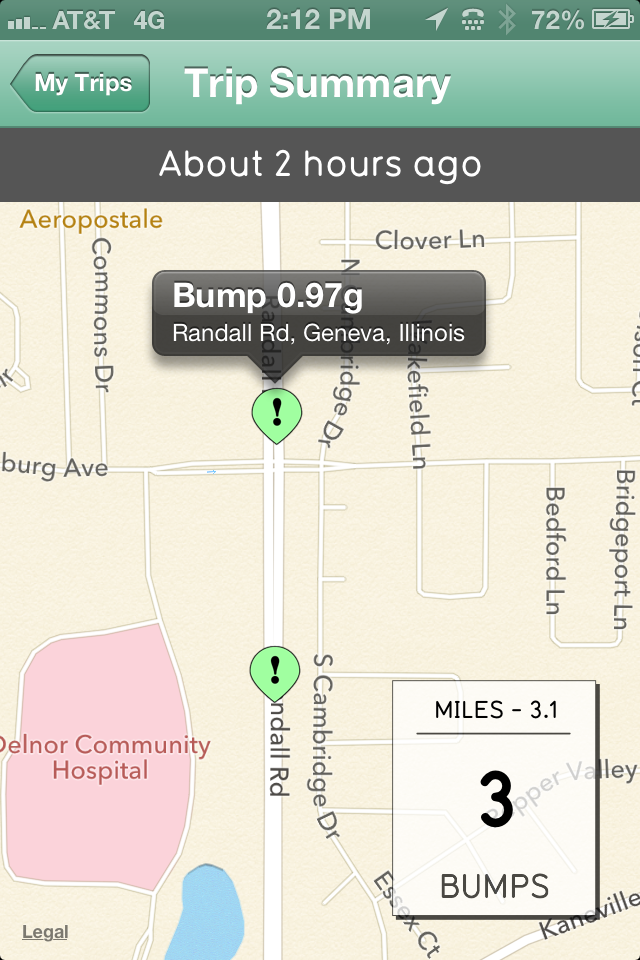 I did notice there seems to be a type of measurement of the roughness of the bump which is interesting. And while this could be useful in indicating the severity of the road condition, smoothness is only one factor engineers look at when rating a road. At work, we've been using the Pavement Surface Evaluation and Rating Asphalt PASER Manual to rate our roads. The method used in this manual considers cracking including the type of cracks, rutting, flushing, raveling, and weathering for example. Then a rating is assigned from one to ten with ten being the best based on the severity of these factors. Of course after establishing the rating, there are other elements to look at when choosing roads for repair such as traffic counts and funding.
I did notice there seems to be a type of measurement of the roughness of the bump which is interesting. And while this could be useful in indicating the severity of the road condition, smoothness is only one factor engineers look at when rating a road. At work, we've been using the Pavement Surface Evaluation and Rating Asphalt PASER Manual to rate our roads. The method used in this manual considers cracking including the type of cracks, rutting, flushing, raveling, and weathering for example. Then a rating is assigned from one to ten with ten being the best based on the severity of these factors. Of course after establishing the rating, there are other elements to look at when choosing roads for repair such as traffic counts and funding.
To be fair to the developer, I don't think they intended for the application to be used by engineers for rating roads. But since it was produced by a city, I was trying to figure out how a map showing bumps picked up by people driving through our town could be used by our city staff. One of the concerns I would have is if actions such as crossing a centerline, turning into a driveway, and changing the volume or sound settings on the phone causes a bump to be recorded, we could be wasting staff time sending people out to check out each bump. And I would be worried that people, or in some cities elected officials, might look at those maps online and contact us wondering what is wrong and why we are not doing something about the bump when perhaps the bump is not a true reflection of the road condition. But I could see how it would be useful to consult while we are out rating roads as one more piece of data to consider. And there is a lot of potential as it becomes more widely used and other features added.
So if you're a transportation professional, what are your thoughts of apps like this and the expectations people have of their transportation agencies based on the output from these type of applications? As an example of how the data is presented publicly, here's the map for Boston showing what has been recorded so far in the area shown.
Gov Games & Civic Guilds
As a result of my participation last year in a course held by Boise State University (BSU), I gained the opportunity to create my own courses using 3D Game Lab – an online game-based learning platform hosted by BSU. My primary goal in doing so was to offer information and resources to citizens in our community in an easy to use and fun format that was accessible 24/7. To begin, I chose to create a course on drainage and flooding because this is a topic about which we seem to get a lot of calls or questions. But now as I am nearing completion of the course and getting ready to roll it out for use, I realized there is no good place or centralized location to offer information about serious games designed specifically for citizens. And while regular games have numerous fan sites all over the place where players can talk about the games and exchange ideas and opinions, there's nothing for players or users of these "gov games."
So I figured if our city needed a place to promote our game and a place where people could discuss the game and offer feedback, other agencies could probably use something like this too. And how much better it would be if we could all be located in one place. That way anyone interested in serious gaming related to government and community would not have to search all over the Internet. And if there was a type of guild site for these games, people could go there to see reviews of games, discover new games, or just interact with others who are interested in civic gaming. The members of this guild site could also become a type of Civic Guild which might then offer opportunities reaching beyond only online interactions!
In the end, I was not really sure how much of a need for this was out there or if it would actually work the way I envisioned, but I went ahead anyway and set up a GovGame Directory and Civic Guild site. You can visit the sites by clicking the links below. Because this idea is still somewhat in Beta form, it would be great to get feedback on whether or not people think this would be beneficial, and if so, how the sites could be improved. And feel free to submit your favorite GovGames through the directory site so we can add them to the listing. I know I'll be adding ours once it's finally completed.
GovGames Directory
Civic Guild Site
A Day in the Life of a Civil Engineer – Day 32 and 33
Day 32 & 33
I decided to combine yesterday's post with today's because wow – have I been busy! On Thursday I tried to finalize a few outstanding items before taking off a few days to attend conferences. I finalized a cost estimate for resurfacing a major roadway in the city. Then sent out the approval letter for the last review on a development. They are now cleared to send in their Letter of Credit for the project. Once we get that, they will receive final engineering approval and can get started on the site work.
Later in the morning, a few of us attended a pre-construction meeting with the Park District and their engineer and contractor. We are all working together to build a community garden. It will be located in the northwest corner of our city on land owned by the Forest Preserve who is also a partner. Our water department will be working with the contractor installing water lines and will later install yard hydrants.
We also had a staff meeting in the afternoon. Because we have so much going on and so many projects, it seems like our staff meetings take longer. It was almost the end of the day when we finished. We also finished out the day by placing a culvert lining project out to bid.
Illinois Association of Highway Engineers
Then today, I attended the Ilinois Association of Highway Engineers conference in Normal, Illinois. It was a very well run event which is impressive because it's all put together by volunteers who work for IDOT. I felt very fortunate to have the opportunity to give one of the presentations and had a great time. (Technically I wasn't working because I had to take a vacation day to attend – we are only allowed time off to attend two conferences a year.)
Warm Mix Asphalt
One of the other presentations was on warm mix asphalt. It was given by someone who is involved in researching testing of asphalt. I could have predicted what he was going to tell us based on the performance of asphalt we have been seeing in the field. Ever since they cut back on the percentage of asphalt content and increased the amount of RAP (recycled asphalt pavement), we've noticed roads don't last as long as they used to. Sometimes we are seeing failures in the first five years. His testing seemed to indicate that using a warm mix improves the performance. The warm mix asphalt is actually a mix design produced at temperatures below that of a traditional mix. The use of this "colder" mix is possible because of the use of additives. I don't think the speaker mentioned this, but warm mix asphalt is one of the innovation components of Every Day Counts. So you can learn more about it here: http://www.fhwa.dot.gov/everydaycounts/technology/asphalt/
Hoover Dam Bypass Bridge
We also listened to an interesting talk by someone involved with the construction of the Hoover Dam Bypass Bridge. He was either one of the engineers or worked for the contractor. The speaker started at the beginning of the project and walked through how it was constructed using a lot of photos taken at each stage. It was incredible to see how they had to construct a whole cable system in order to just get people and materials out to the areas where they were working.
My presentation: Social Media and Its Use in Transportation Projects
So here is the presentation I gave – I wish I had the audio because I usually put so little on the slide and then talk to convey the story behind the slide. But I don't think they were taping the presentations.
Can I Get Some Customer Service with that Insult?
 Fortunately I rarely experience terrible customer service. But this weekend, I had one of those incidents where someone whose job it is to provide service chose instead to throw out subtle insults and avoid trying to understand or address a problem for which they are responsible. So I thought it'd be a good topic to explore. It also made me think of one of my favorite TV shows: The IT Crowd. This is a British humor show that used to be available online. The show revolves around a corporate IT department consisting of two men and their supervisor. One of the funny parts of the show is when employees of the company call the department to get help with their computer. The two men always ask "have you tried turning it off and on?" This is so common of a response that they have even recorded it so the phone can be answered automatically and the response given without them getting involved. For these IT experts, turning your computer off and on is a very obvious first solution to try, but they never make fun of the person asking them for help – well at least not directly to them. The humor comes more from how regularly they have to say the same thing over and over to the point that they seem to say it without thinking. Then if their suggestion of turning it off and on doesn't work, they go off to provide the service for which they get paid and usually on the way get into all kinds of mischief.
Fortunately I rarely experience terrible customer service. But this weekend, I had one of those incidents where someone whose job it is to provide service chose instead to throw out subtle insults and avoid trying to understand or address a problem for which they are responsible. So I thought it'd be a good topic to explore. It also made me think of one of my favorite TV shows: The IT Crowd. This is a British humor show that used to be available online. The show revolves around a corporate IT department consisting of two men and their supervisor. One of the funny parts of the show is when employees of the company call the department to get help with their computer. The two men always ask "have you tried turning it off and on?" This is so common of a response that they have even recorded it so the phone can be answered automatically and the response given without them getting involved. For these IT experts, turning your computer off and on is a very obvious first solution to try, but they never make fun of the person asking them for help – well at least not directly to them. The humor comes more from how regularly they have to say the same thing over and over to the point that they seem to say it without thinking. Then if their suggestion of turning it off and on doesn't work, they go off to provide the service for which they get paid and usually on the way get into all kinds of mischief.
Don't insult people because they don't know what you know
In engineering, we also have people who call with problems that to us seem to have very obvious solutions. The key to providing great customer service is understanding that we only know what we know because we have been trained and have experience in that specific topic, and we are entrusted with helping others out who don't know. We also should not expect or be upset because someone comes to us for help – it's part of our job to help people. So if someone calls asking for information or help, we should not respond by insulting them for not knowing what we know or making them feel bad. Sometimes this can be difficult because we can offend without meaning to. It can be a fine line between helping someone understand and insulting them by assuming they know nothing. To avoid this, I usually try to figure out the baseline for their knowledge about what we are dicussing and work from there.
Dont' insult people because they need your help
Customer service is also difficult because people are usually calling because they have a problem and many times are not happy. And even though they might have completely misunderstood, we need to remain focused on understanding their problem and helping them figure out a solution. Insulting them or being rude or mean is not conducive to fixing the problem. I saw an excellent example of this on the show Hoarders the other night. A woman who was a hoarder was having a complete meltdown and yelling at everyone including the case worker. But the case worker, instead of allowing herself to be drawn into the battle, remained calm and focused on her objective – helping this woman to part with all her stuff.
Failing at customer service is failing to perform your job
If our job includes customer service, and we fail to successfully provide it, then we are failing at performing part of our job duties. So while some may fail because they haven't been trained in providing it, or they don't understand the points above, some people have suggested to me that a certain type of person will fail on purpose to keep you from bugging them. Their theory is that if someone is obnoxious and insulting every time you talk to them, eventually you seek help elsewhere and leave them alone. This would obviously be a work avoidance tactic. And it surprises me that people would do this because I would think at some point, people doing this would no longer be needed – they have trained people to get by without them!
Insults are ok if the service is outstanding?
Not sure if everyone would agree on this one. But it makes me think of the time I once worked on a job with a contractor who was very arrogant, obnoxious, and insulting. Even so, his company performed well, he did everything I asked, and I had no problems on the entire project. One day we were walking on the job, and he was explaining how he was having difficulty getting a piece of equipment for the project. He said he didn't think the person working for the supplier liked him very much. I told him it was probably because he was so rude and insulting. Fortunately I knew he was the type of guy that didn't take offense to such brutal honesty. He instead seemed genuinely surprised and mentioned how well we got along so he wouldn't have expected me to think that. So I told him he was rude and insulting to me too, but I didn't care and ignored it because he did such an outstanding job. I wasn't there on the job to be best buds – I was there to successfully complete a project, and we were accomplishing that goal.
I have also heard of restaurants that operate under this theme. If you go to their establishment, they are rude to you, but supposedly people keep going back because the place is so awesome and the food is so good. So although I would not advocate this approach to customer service, I suppose the lesson here would be if you are going to be insulting and rude, you better be pretty darn good. But unfortunately I suspect most who are insulting are exhibiting that behavior to mask non-performance.
So who is really responsible for improving customer service?
I'll use a sports analogy here even though I'm not really a sports person. If a pitcher is choking who do the fans get upset with? Yes, they are probably annoyed with the pitcher – perhaps he pushed himself too hard or is having a bad day or skipped too many trainings. But in the end only one person can pull him out of there. If the team has any chance of winning, the coach must be the one to assess the situation and make the call to send in a relief pitcher. Then it's the job of the coach to figure out what's wrong and help his player get back up to acceptable performance levels.
So my experience this weekend not only made me more reflective of my own performance as I help citizens. It also renewed my determination to do a better job myself, and it made me more aware that I have a responsibility for those who I manage. I need to make sure they are consistently delivering great customer service, and if they at some point might struggle I need to be there to help them out and get them back on top of their game. And I would think my supervisor would do the same for me.



